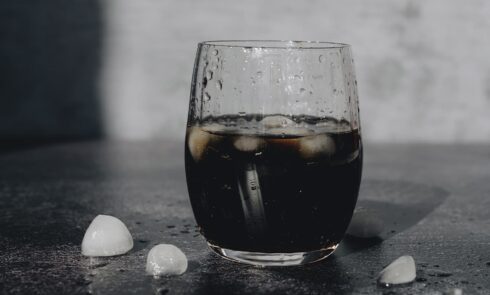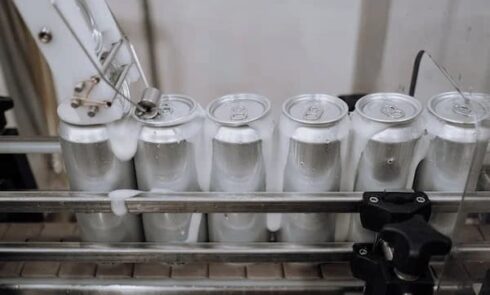Many beer lovers often do not know how beer is made.
Malt
Brewing begins with barley, wheat, oats or rye sprouted in the malt shop. The grain is then dried in a dryer and sometimes roasted, a process usually done in a separate room from the brewery. In the brewery building, the malt is passed through a crusher to open up the shell of the grains. This helps to extract more starch during the mashing process. Large breweries also use soaking before crushing.
The combination of different types of grains in the brewing process is often referred to as grain balance.
Mashing
The first step in the brewing process is mashing, in which crushed malt (coarse grain) is placed in a mash pot. Mashing is the process of mixing mash with water and heating it to between 40 and 80ºC. During mashing the natural enzymes in the malt break down the starches into sugars which then become alcohol. This process takes on average one to two hours. The mashing temperature can be gradually increased or the mash can be left at a certain temperature at the brewer’s discretion. Different temperatures activate different enzymes, which affects the extraction of proteins and digestible sugars. Proteins play a less important role, but are important for the formation of foam in the finished beer. Most breweries use steam for heating.
Infusion and decoction mashing methods
Water is mixed with the grits in one of two ways: infusion or decoction. The infusion mashing method heats the grain in a single vessel (mash vat); the broth mashing method removes a portion of the mash from the mash pot and brews it in a separate vessel and returns it to the original mixture. Some brewers repeat this process twice (two-barrel mashing) or even three times (three-barrel mashing).
The resulting liquid consisting of sugars and water in the mashing process is called wort.
Decanting
Decanting or filtering the wort is the process of separating the wort from the beer grist as efficiently as possible. It is usually carried out in a separate decanting vat, although the mash filtration process is now available to both large and small breweries.
The bottom of the decanting vat has round or longitudinal holes as well as drain holes. The solids from the mash remain at the bottom and form a filter for the wort.
The decanting process consists of three steps: mash-out, recirculation, and rinsing. Mash-outs consist of heating the mash to 76ºC which stops the enzymatic reactions and retains the digestible sugars in the wort, and makes the wort less viscous, facilitating further work.
The wort is then recirculated and a filter layer is formed, which naturally separates the grain particles from the wort, making the wort more transparent.
Once the wort is clear, the remaining pellets, consisting of hulls and particles from the mashing process, must be washed. The flushing of the pellets is done with warm water in order to get as much of the sugars for the wort out of the pellets as possible.
After washing, the pellets are usually refined as animal or pig fodder, or used in the making of bread.
Boiling
Once the must has been made, it is sterilized by boiling in a cauldron. Enzyme activity is stopped and the liquid evaporates. During the brewing process, which usually lasts between 60 and 120 minutes, hops are added.
Blackening
The flavor, aroma, and bitterness that hops impart to a beer depend on the stage at which they are added. Hops may be added early in the brewing process to give more bitterness, and the longer they are boiled the more bitter the beer will be. In the middle of the brew, hops are added for a brighter flavor, and at the end of the brew for flavor and aroma.
Hops can also be added after brewing during swirl stirring (flavor/aroma), fermentation (dry hop for flavor), or maturation (dry hop for aroma).
Whirlpool stirring
At the end of the brewing process, the wort is swirled to make the wort more transparent by removing proteins and hop particles which have settled at the bottom. These particles are called sediment. A digester can be used for vortex stirring, but many breweries have a special container for this purpose.
A hop separator is a vortex mixing tank that has a separate chamber with hops to filter the sludge. This gives the wort a brighter hop aroma. A hop separator is often used when whole hop cones are added during brewing. A standard vortex vat is best used for separating the sludge produced when using pelleted hops.
A heat exchanger is then used to cool down the wort to a temperature suitable for fermentation. The water heated there is often used to start a new brewing cycle.
Fermentation
The wort is pumped into a fermentation vat, and yeast is added (added) to it. This stage is called basic fermentation – the sugars are converted into alcohol and carbon dioxide. The result is an ale or lager, depending on the yeast used. (Hybrid beers also use one of these two types of yeast.)
After the yeast is added at the correct temperature, the beer is usually kept at 15 to 20ºC (ale) or 10ºC (lager). The process of turning sugar into alcohol with yeast generates heat, and this process must be kept under strict control. A higher temperature with yeast for ale leads to a more active formation of aromatic organic compounds – esters.
Maturation
During the aging process, ales and lagers mature and acquire their final flavor, and the amount of fermentation byproducts decreases. Dry hops may also be carried out at this stage to achieve a more pronounced aroma. Greater complexity of flavor can be imparted through other methods, including barrel aging.
The cold storage of the beer for 30 days, known as lagering, determines the main difference between lagers and ales: greater transparency and a different taste.
Secondary fermentation, known by the German word “kreuzening,” is also used to make lagers. After the fermented “young” beer has been pumped into cold storage tanks, actively fermenting beer with yeast added is added. This additional batch of yeast activates the formation of carbon dioxide and helps eliminate the undesirable effects of the main fermentation – diacetyl (or butter flavor) and other compounds.
The aging process can last from one to six weeks, and sometimes longer. Depending on the style, the brewer may filter out the remaining yeast or other particles in the beer and then place it in the maturation tank. Pasteurization can be done to give the beer more clarity and increase its shelf life.
Bottling and carbonation
After the fermentation process, the beer must be poured into kegs or bottles and carbonated, either naturally or by force. With forced carbonation the CO2 is pumped into the container at high pressure in order to saturate the drink with carbon dioxide. Forced carbonation is used more often because it speeds up the process and makes the beer even more transparent.
During the fermentation stage, “kreuzening” can also be used for carbonation. In addition, bottling or the addition of small amounts of sugar and yeast at the time of bottling is also used for this purpose.


